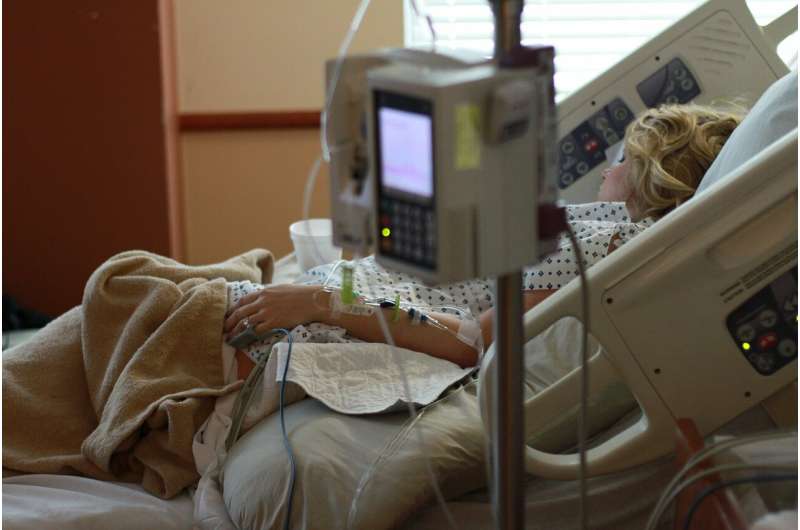This article has been reviewed according to Science X's editorial process and policies. Editors have highlighted the following attributes while ensuring the content's credibility:
fact-checked
peer-reviewed publication
proofread
Study finds hospital surfaces can harbor harmful microbes even after routine disinfection

A new study published in the American Journal of Infection Control reports microbial contamination—including pathogenic and potentially pathogenic bacteria—on high-touch hospital surfaces despite compliance with recommended disinfection protocols.
The findings shed light on the persistent challenge of reducing health-care-associated infections (HAIs) and indicate that innovative strategies may be needed for more effective disinfection of these surfaces.
The risk of microbial contamination on hospital surfaces is a well-known factor in the spread of HAIs, and it has led to carefully established disinfection procedures to keep patients and health care workers safe. But as this new study demonstrates, current best practices in routine hospital disinfection may not be sufficient to prevent the spread of pathogens, particularly for surfaces that are frequently touched by many different people.
The study was conducted at the Central Texas Veterans Health care System, where researchers collected samples from 400 surfaces between June and July of 2022. They focused on high-touch surfaces such as simulation manikins used for resuscitation practice, workstations on wheels, breakroom tables, bed rails, and computer keyboards at nurse's stations. All of these surfaces were found to harbor bacteria, and manikins and bed rails also had the most diverse types of bacteria.
A total of 60 different kinds of bacteria were identified across all samples, including 18 well-known human pathogens and a number of bacteria that can be pathogenic to humans under certain circumstances.
The most common types of known pathogenic bacteria included Enterococcus, Staphylococcus aureus, Streptococcus, Escherichia coli, and Klebsiella aerogenes, among others. Some of the potentially pathogenic types of bacteria have been associated with central-line associated bloodstream infections, meningitis, and endocarditis. About half of the bacteria identified through these samples were also found in clinical samples collected from patients during 2022.
"It is a continuing frustration to health care professionals that HAIs persist despite rigorous attention to disinfection practices," said Piyali Chatterjee, Ph.D., Research Scientist at Central Texas Veterans Health care System and senior author of this paper.
"Our study clearly shows the bioburden associated with high-touch hospital surfaces—including simulation manikins, which are not typically regarded as a risk because patients rarely touch them—and indicates that we must do better in protecting the health of our patients and our hospital employees."
"This study underscores the critical value of infection prevention and control efforts in our health care systems," said Tania Bubb, Ph.D., RN, CIC, FAPIC, 2024 APIC president.
"By understanding the gaps in our current disinfection protocols, we can focus on developing more effective protocols and education strategies to prevent the spread of dangerous organisms and better protect patients and health care workers from HAIs."
More information: Understanding the significance of microbiota recovered from healthcare surfaces, American Journal of Infection Control (2024). DOI: 10.1016/j.ajic.2023.11.006


















